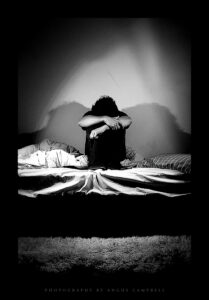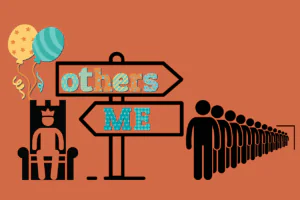Originally posted in 2023
Trauma happens when you experience an event as physically or emotionally harmful or even life-threatening. Your body’s ability to cope is overwhelmed. Even though the event passes, trauma has lasting adverse effects on a person’s mental, physical, social, emotional, and spiritual well-being. With nearly 61% of men and 51% of women experiencing trauma in their lifetime, it’s essential to understand what trauma does to the brain to be able to heal and minimize life-long adverse effects.
Trauma: Brain and Body
Harmful or life-threatening events cause the brain to trigger the release of adrenaline, activating the fight or flight response so that you can prepare to run or defend yourself. If your brain perceives you are in danger, it works hard to get you out. At times like this, a lot of energy courses through you.
The Fight or Flight Response
It’s important to understand that your fight or flight response is an automatic response. When a threat is present, the body pauses all functions that are involved in the usual “rest and digest” state. These physiological changes help improve the chances of survival. Increased heart and breathing rate, the release of stress hormones (cortisol and adrenaline), dilated pupils, and increased blood pressure are some of the changes. It’s a total body shift to a threat response state.
As long as you can run from the threat or fight back, these physiological changes will continue. When you’re “caught” or can no longer run or fight, you freeze. This freezing is when your nervous system is too overwhelmed to offer any other solutions to survive. This is the point where most trauma occurs.
Trauma and the Brain
When adrenaline is released, the prefrontal cortex essentially shuts down. The prefrontal cortex is part of the
frontal lobe. It controls primary cognitive skills, like emotional expression, problem-solving, memory, language, judgment, and motor control. Executive Functioning is one of the biggest jobs of the prefrontal cortex. It is involved in decision-making, problem-solving, self-control, and acting in ways that align with long-term goals. When the prefrontal cortex goes offline during the threat response, high reasoning and language structures stop.
Trauma effectively imprints the stressful event in the brain. The amygdala stores the memory of the traumatic event, which ensures you do not find yourself in this dangerous situation again. However, the amygdala doesn’t save the event as if it was a story – the amygdala stores the emotional significance of the traumatic event as experienced by our five senses. So the memory is fragments of visual images, smells, sounds, tastes, or touches.
Trauma Triggers
Since the traumatic event is stored as sensory fragments, it can be hard to verbalize and attach language to it. Instead, your physical body is what is holding the trauma. The traumatic energy of these fragments is stored in your body and can be triggered by physical or sensory input in some way reminiscent of the trauma. Even though the sensory information that triggers the memory of the traumatic event is usually from an insignificant, regular event, the brain misinterprets it as dangerous.
This means anything internal (like thoughts or feelings) or something external (like a situation, place, sound, or smell) can be enough to remind your brain of the past trauma. When your mind is reminded of the trauma, the brain wants to warn you of impending danger – even when there isn’t any.
So it can feel like triggers come out of the blue. But identifying the triggers can help you work towards coping with them. Angela Coston has a great example of identifying triggers. Here are some questions you can ask yourself when determining what was triggering in a situation:
- In what type of situation was I?
- What was happening around me?
- What emotions was I feeling?
- To what sensory inputs was I exposed?
- What types of thoughts were going through my head?
- How did my body feel?
Related Reading: Can Childhood Trauma Cause Anxiety? Yes, & Here’s How
How to Cope with Trauma Triggers
Identifying your triggers is the first step towards coping with them – because you cannot avoid them all. Increased awareness of the source for your triggers also helps you recognize why you are reacting the way you are. This understanding can help you feel more in control because there are patterns and predictability to what you are experiencing.
Here are some other healthy strategies to lessen their impact:
- Mindfulness
- Relaxation techniques
- Social support
- Journaling
- Self-soothing
Trauma Differences
It’s necessary to recognize that every person is unique in terms of experiences, reactions, and resilience. So, there isn’t a one-size-fits-all approach for treating trauma. Here are some nuances that should be considered:
- Trauma occurs when your nervous system becomes overloaded and can no longer fight or flee and can only freeze.
- Trauma results from an event that is perceived as threatening, particularly life-threatening; this threat can be real or imagined.
- Trauma is a very individualized, subjective experience. What one person perceives as overwhelming and traumatic may not be so for another. This does not invalidate the experience or traumatic symptoms that follow.
- Trauma creates a disconnection between the body and the mind.
- Individuals with childhood trauma, particularly early childhood, are more predisposed to later experiences of mental health conditions including Post-Traumatic Stress Disorder (PTSD).
Related Reading: 3 Ways Childhood Trauma Can Affect Your Adult Relationship
Trauma Healing Options
There are numerous therapy approaches to work towards healing from trauma. However, it is vital to find an approach and therapist that works for you. Trauma-focused treatment works to acknowledge and integrate the traumatic event into your life, not minimize or remove it.
- EMDR therapy sessions involve tracking eye movements while mentally focusing on the traumatic experience in very brief exposures. EMDR treatment can be useful in alleviating traumatic symptoms and distress.
- Somatic Experiencing (SE) can be a very effective trauma treatment because it works to address the physiological memory of the traumatic event that is stored in the body. SE focuses on completion of interrupted fight or flight responses, and on nervous system regulation. An optional element of SE can be touch. This increases your tolerance for and shores up containment of difficult bodily sensations and suppressed emotions.
- Yoga therapy can be a useful addition to trauma treatment because this body-based approach works to address the emotion stored in the body by developing mindfulness, self-awareness, and inner peace.
- Pharmacotherapy is the use of medications to manage traumatic reactions, making them less intense. Medications do not make the pain disappear. Rather, they can be used in combination with therapy to manage sensations to allow for better working through your trauma.
- Exposure therapy is a form of behavior theory that works to reduce the fear of the traumatic event through gradual exposure. Exposure therapy has been shown to reduce anxiety and depression, improve social adjustment, and organize trauma memory.
- Cognitive-behavioral therapy for trauma helps work towards changing incorrect or irrational thoughts and increasing your knowledge, skills, and ability to manage traumatic triggers.
- Trauma survivor group therapy is helpful because it promotes social connection and support by hearing others’ stories and sharing your own. Groups can vary in nature, and it is crucial to choose one that is in line with your experiences, needs, and journey.
Related Reading: What You Need to Know Before Pursuing PTSD Treatment with EMDR
Unprocessed trauma can be paralyzing and disrupt the quality of your life. A qualified trauma therapist will guide you through the healing of your trauma, empowering you to become an active participant in life. If you are in the Chicagoland area, please reach out to us in our locations in Glen Ellyn, Chicago (Jefferson Park), or Sycamore, for help and support. You do not need to go through this alone.
Rhonda Kelloway is the owner and principal therapist at Life Care Wellness, a group psychotherapy practice in Glen Ellyn, Sycamore, and Chicago (Jefferson Park neighborhood), Illinois. She is a trauma specialist utilizing a Somatic Experiencing framework to utilize the body’s wisdom in healing. She also uses EMDR and a variety of traditional psychotherapy approaches in her work. In addition to being a psychotherapist, she is a trained divorce and family mediator.






